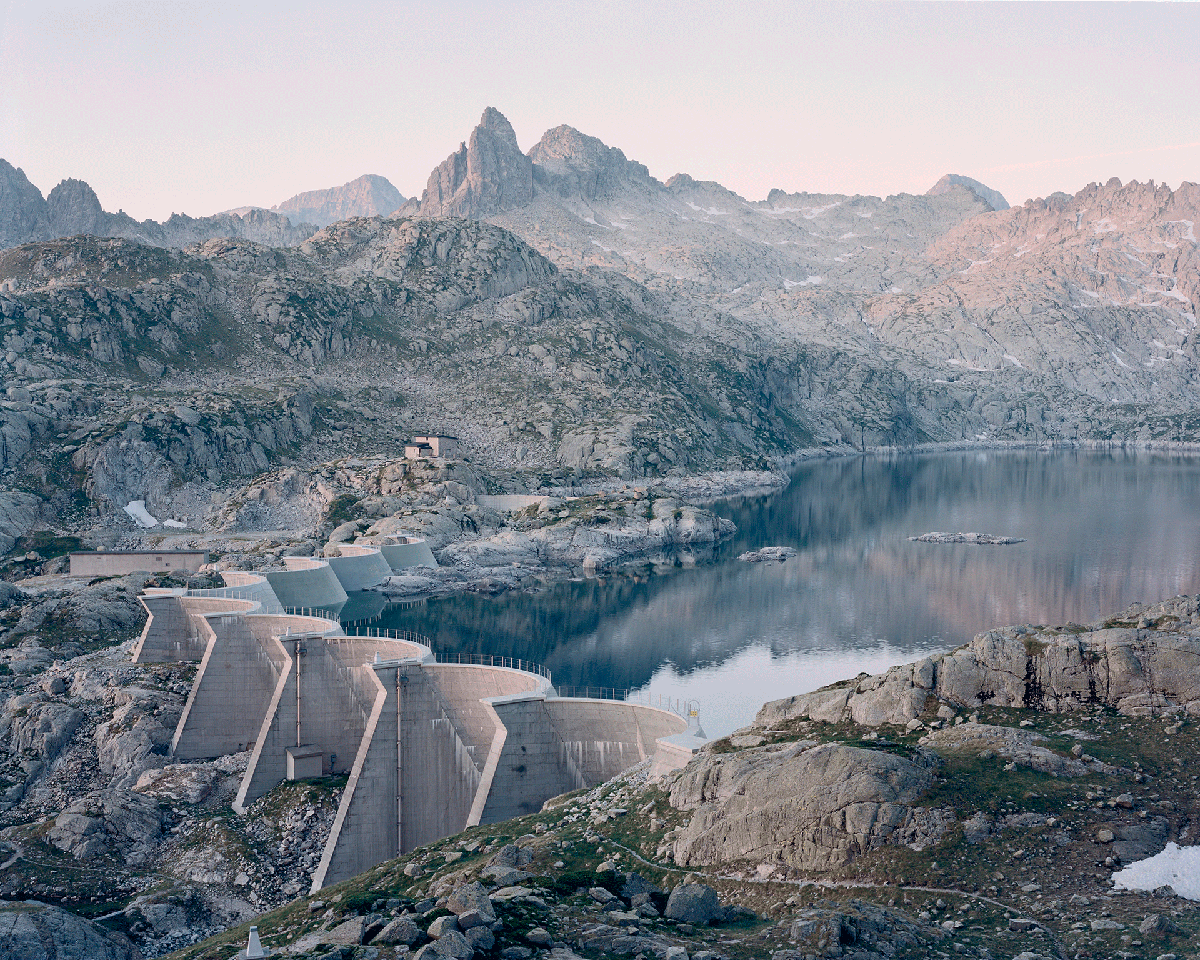
The extent to which natural disaster protection became part of the European landscape is the topic of State of Nature. Claudius Schulze travelled about 50,000 km across Europe, photographing with a large format view camera down from an aerial work platform seemingly picturesque landscapes.
But each of those idyllic sceneries contains imperfections: alpine panoramas are crossed by snow sheds, the North Sea coast is furrowed by breakwaters. In each of the photographs protective structures rise into the landscape.
In the age of the Anthropocene climate change and extreme weather constantly increase the threads of gales, floods, and avalanches; it‘s civil protection agencies maintaining ordinary life. These pictures are not about defining the boundary between “artificial” and “natural”. On the contrary, the defences are the pre-requisite to these landscapes: the sunshine sparkles on the surface of the mountain lakes only because it was artificially dammed, the dunes only rise because they are protected against storm surges.
In the “First World” the lawns are watered, the rivers kept in check by levees, the mountains opened up to winter sports. It’s no wonder Europeans tend to regard nature as picturesque, appealing, tamed. They forgot about nature’s sublime and threatening side thanks to the defenses put in place. Civilization is well protected against the dangers of nature and those that come from environmental pollution and unrestrained carbon emissions.
The accompanying book is published by Hartmann Books.